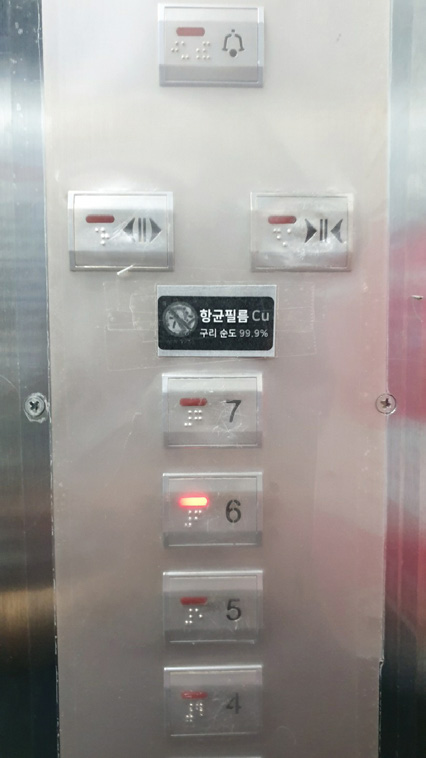Copper film has been used to prevent coronavirus in recent times. But does copper really work? ST introduces copper`s principle of sterilization and efficacy. .............................................Ed

The incredible antimicrobial properties of the element copper were well-known even before the discovery of germs. There is vast historical evidence that shows copper has accompanied humanity in its quest for cleanliness since the ancient times.
Recently, copper is being sought after again for usage in the battle against COVID-19. One of its most common usages in Korea is that in the form of a thin copper ‘antimicrobial sheet’. This translucent film was a surprise smash hit in the first half of 2020, used on elevator buttons, electronic locks, healthcare devices and so on.
While such copper items are being spread rapidly, nobody seems sure of their mechanisms or actual effectiveness. When analyzing the results of an independent survey (survey targets 21 20~60-year-old people), around four out of five people turned out to have a vague impression of such items and their effectiveness, stating “it’s better than nothing.”
The actual effectiveness of copper against COVID-19 is still under study, and it is thus impossible to give a confident answer on whether it is functional for that specific illness. However, the ‘antimicrobial’ potency of copper has been proven time and time again. Because of this, we decided to introduce the microbe-destroying mechanisms, previous studies on coppercausing reductions of microbes, and the incredibly long lifetime of copper’s cleansing properties below.
To understand the power of copper’s antimicrobial properties, one must first look at its mechanisms. There are two ways that prove copper is antimicrobial. First, copper actively destroys microbes. When microbes absorb copper, copper releases reactive ions to destroy the outer shell of the microbe. When this step is finished, the ion infiltrates the microbe and does the same thing inside, destroying the RNA or DNA of the microbe in the process. It is also speculated that copper ‘plays musical chairs’ with the metals in a microbe’s protein, and steals the spots of
metals that are crucial to a protein’s makeup. Once the proteins are sufficiently twisted, the microbe cannot function properly.
Research backs up the potency of copper. According to a paper by Harold T. Michels and others on the HERD journal, the number of microbes on a copper ally showed a 99.9% decline in a lab environment, and 83% in a hospital environment. Patient wards that had copper alloy parts installed also saw 58% less microbe-related infections compared to ordinary wards. According to a paper published on PLOS ONE by Cupron Scientific, when microbes are applied in aerosol
form to a ‘copper mask’, the remaining amount of microbes became none or next to none after 30 minutes (*Cupron Scientific is a company that produces copper masks). There have been numerous studies that have proven that copper is effective in warding E.coli, influenza A virus, and salmonella.
The remarkable thing about this is that this property is not short-lived. According to Southampton University microbiologist Bill Keevil, the copper linings on New York City Grand Central Terminal rails have the same antimicrobial properties as newly processed copper. It is also notable that the previously mentioned hospital study used aged copper instead of new copper alloy.
As can be seen above, the antimicrobial properties of copper are incredible in action, and they have been proven as such. The prospect of seeing more practical purposes of copper is exciting
for all.
Lee Tae-ran (ST Cub-Reporter)
leafpool@soongsil.ac.kr


